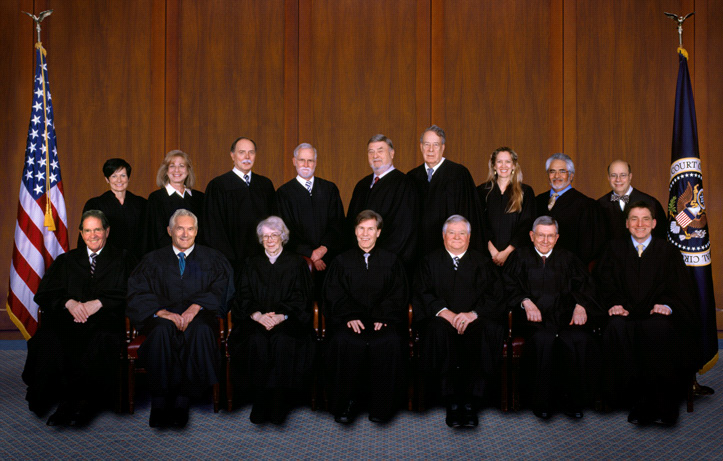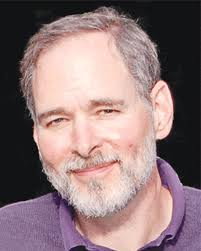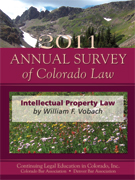I have often thought it would be interesting if someone would start a Wikipedia page listing past Federal Circuit clerks — much like Wikipedia has done with Supreme Court clerks. It would be interesting to see where the clerks go after their service on the court and which undergrad and law schools the clerks attended. To what degree do they go to work at the Solicitor’s Office, in-house, or private practice? It would also be interesting to see how different technical areas are represented via clerks’ technical degrees.
Searching for something else this evening, I stumbled across the web site The Clerkship Scramble [Link]. It had some information about law schools attended by recent clerks. Maybe readers can help that blogger fill out the roster for blank years:
Chief Judge Randall R. Rader
Howard T. Markey National Courts Building
717 Madison Place, N.W., Suite 901
Washington, DC 20439
2012-13:
2011-12: GW
2010-11: SLS, GULC, WUSTL
2009-10: American
2008-09: Boalt, Iowa
2007-08:
2006-07:
2005-06:
2004-05:
Chief Judge Rader has four term clerks.
Judge Pauline Newman
Howard T. Markey National Courts Building
717 Madison Place, N.W., Suite 801
Washington, DC 20439
2012-13: NYU
2011-12: NYU, UIUC
2010-11: HLS, NYU, UIUC
2009-10: UIUC, George Mason
2008-09: GULC, George Mason
2007-08:
2006-07:
2005-06:
2004-05:
Judge Newman has four term clerks.
Judge Alan D. Lourie – OFF PLAN
Howard T. Markey National Courts Building
717 Madison Place, N.W., Ste. 908
Washington, DC 20439
2012-13:
2011-12: Boalt, GULC, UT, Fordham
2010-11: SLS, UT, Fordham
2009-10: UM
2008-09: HLS, HLS, SLS
2007-08:
2006-07:
2005-06:
2004-05:
Judge Lourie has four term clerks.
Judge William C. Bryson – OFF PLAN
Howard T. Markey National Courts Building
717 Madison Place, N.W., Room 910
Washington, DC 20439
2012-13:
2011-12: UVA, NU, GW, BC
2010-11: HLS, Boalt, Duke
2009-10: UM
2008-09: GULC
2007-08:
2006-07:
2005-06:
2004-05:
Judge Bryson has four term clerks.
Judge Richard Linn
Howard T. Markey National Courts Building
717 Madison Place, N.W., Suite 816
Washington, DC 20439
2012-13:
2011-12: SLS, GW, Loyola-Chicago
2010-11: SLS, GW, George Mason, Loyola-Chicago
2009-10: HLS, SLS, George Mason
2008-09:
2007-08:
2006-07:
2005-06:
2004-05:
Judge Linn has four term clerks.
Judge Timothy B. Dyk – OFF PLAN
Howard T. Markey National Courts Building
717 Madison Place, N.W., Suite 915
Washington, DC 20439
2013-14: NYU
2012-13:
2011-12: YLS, UT
2010-11: YLS, GULC, UT
2009-10: Duke, NU, GULC, GULC
2008-09: HLS, GULC, UT
2007-08: HLS
2006-07:
2005-06:
2004-05:
Judge Dyk has four term clerks.
Judge Sharon Prost
Howard T. Markey National Courts Building
717 Madison Place, N.W., Suite 808
Washington, DC 20439
2012-13:
2011-12:
2010-11: SLS, GW
2009-10: Cornell, American
2008-09: Penn, Chicago-Kent
2007-08:
2006-07:
2005-06:
2004-05:
Judge Prost has four term clerks.
Judge Kimberly A. Moore – Alumni Preferred, Hiring Now for ’13-14
Howard T. Markey National Courts Building
717 Madison Place, N.W., Room 913
Washington, DC 20439
2012-13:
2011-12: Penn, Emory
2010-11: USC, GW, George Mason
2009-10: GW
2008-09: UM, UT, GW
2007-08:
2006-07:
Judge Moore has four term clerks.
Judge Kathleen M. O’Malley
Howard T. Markey National Courts Building
717 Madison Place, N.W., Room 907
Washington, DC 20439
2012-13:
2011-12: NYU, Ohio St., Arizona State, Syracuse
2010-11: SLS, GULC, Ohio St., Arizona State
Judge O’Malley has four term clerks.
Judge Jimmie V. Reyna
Howard T. Markey National Courts Building
717 Madison Place, N.W., Room 809
Washington, DC 20439
2012-13:
2011-12: GULC, Pittsburgh, Pittsburgh
Judge Reyna has four term clerks.
Judge Evan J. Wallach
Howard T. Markey National Courts Building
717 Madison Place, N.W.
Washington, DC 20439
2012-13:
2011-12:
Judge Wallach has four term clerks.
Senior Judge Haldane Robert Mayer
Howard T. Markey National Courts Building
717 Madison Place, N.W.
Washington, DC 20439
Judge Mayer has career clerks only.
Senior Judge S. Jay Plager
Howard T. Markey National Courts Building
717 Madison Place, N.W., 4th Floor
Washington, DC 20439
2012-13:
2011-12:
2010-11: GW
2009-10:
2008-09:
2007-08:
2006-07:
2005-06:
2004-05:
Judge Plager has one term clerk.
Senior Judge Raymond C. Clevenger, III
Howard T. Markey National Courts Building
717 Madison Place, N.W., 5th Floor
Washington, DC 20439
2012-13:
2011-12: SLS, UVA
2010-11:
2009-10: NYU
2008-09: GW
2007-08:
2006-07:
2005-06:
2004-05:
Judge Clevenger has two term clerks.
Judge Alvin A. Schall
Howard T. Markey National Courts Building
717 Madison Place, N.W.
Washington, DC 20439
2012-13:
2011-12:
2010-11: George Mason
2009-10: Duke
2008-09: Penn, GW, Iowa
2007-08:
2006-07:
2005-06:
2004-05:
Judge Schall has two term clerks.
Judge Arthur J. Gajarsa
Howard T. Markey National Courts Building
717 Madison Place, N.W., 8th Floor
Washington, DC 20439
2012-13:
2011-12: Penn
2010-11: SLS, UT, BC
2009-10: SLS
2008-09: UT
2007-08:
2006-07:
2005-06:
2004-05:
Judge Gajarsa has one term clerk.
(I have to admit that some of the abbreviations used above threw me for a second. I was pretty certain that the court was not hiring clerks from the Society of Laparoendoscopic Surgeons (i.e., SLS). But, it took a couple of further searches to locate Stanford Law School as being abbreviated that way, as well.)


